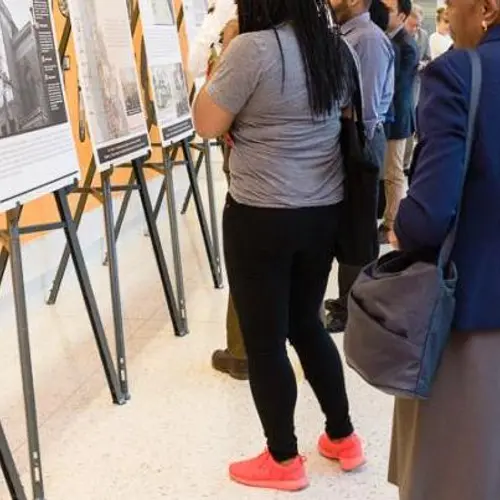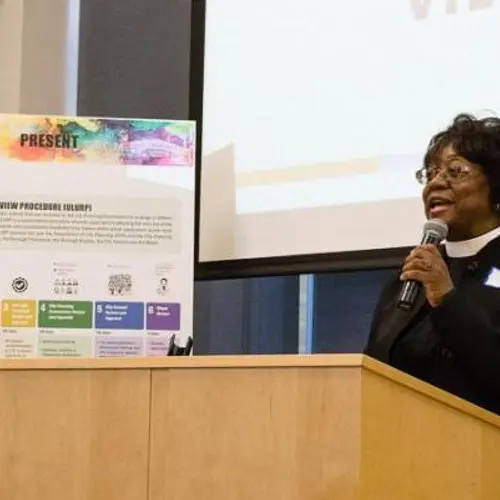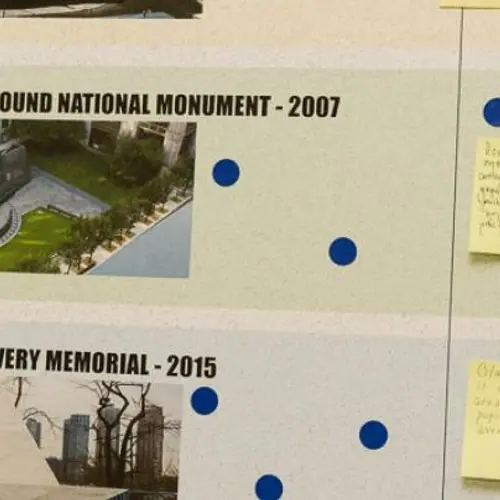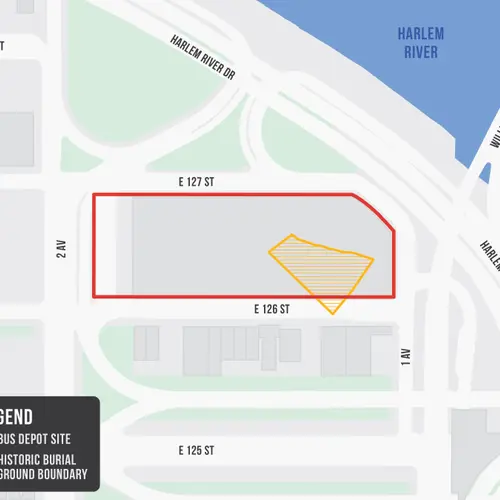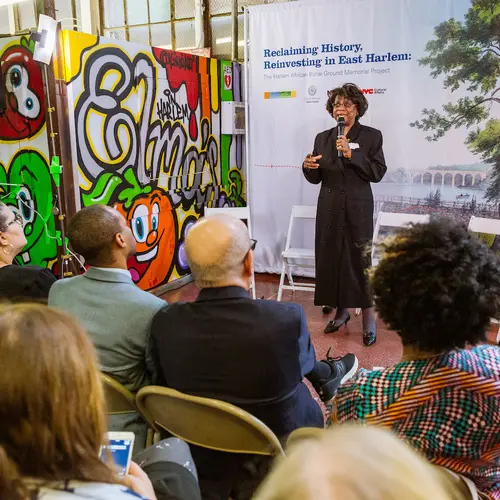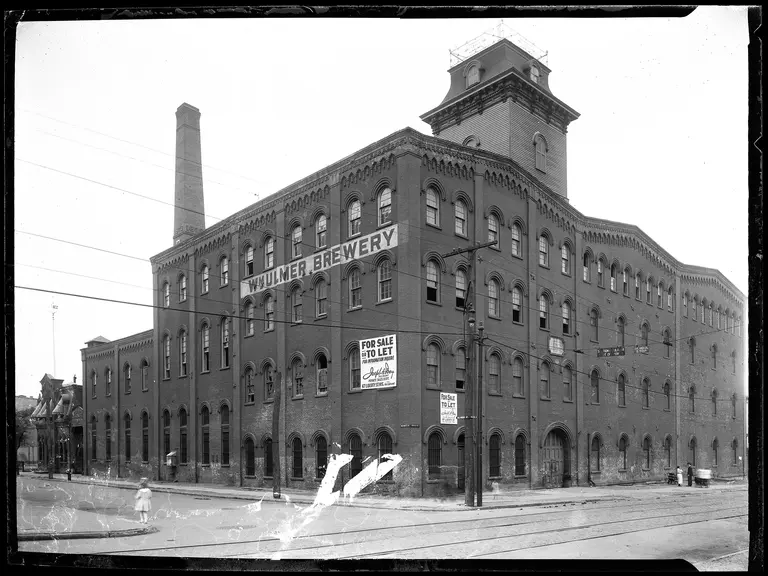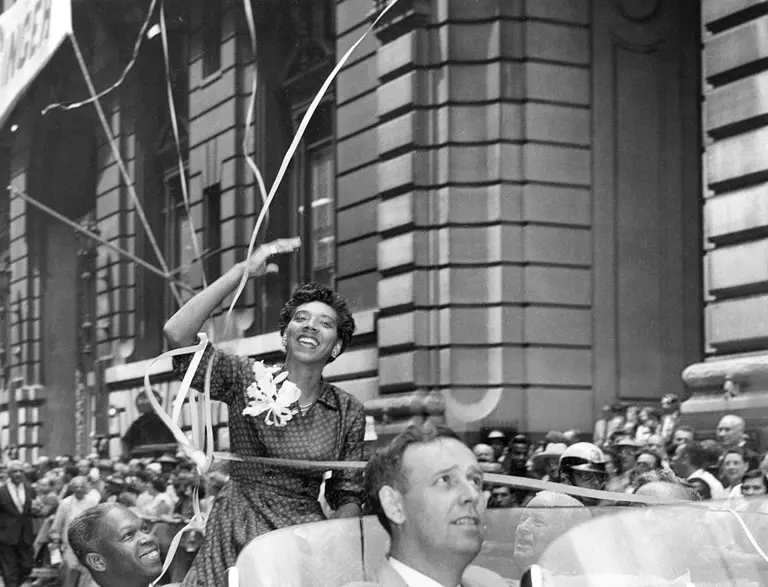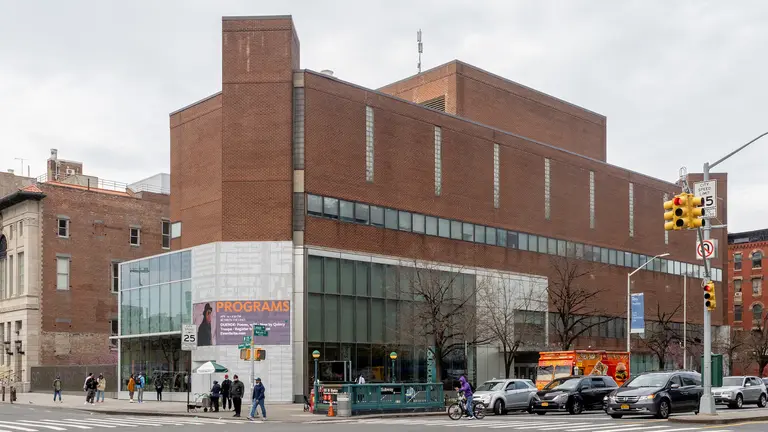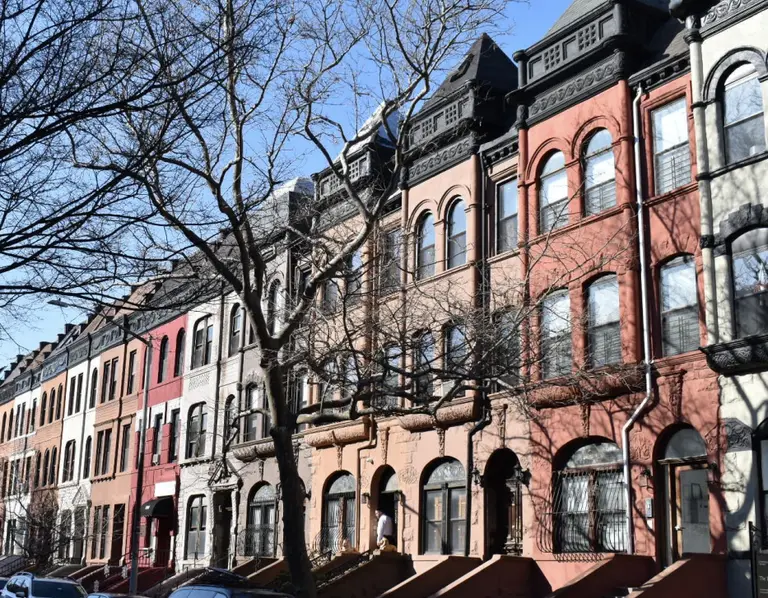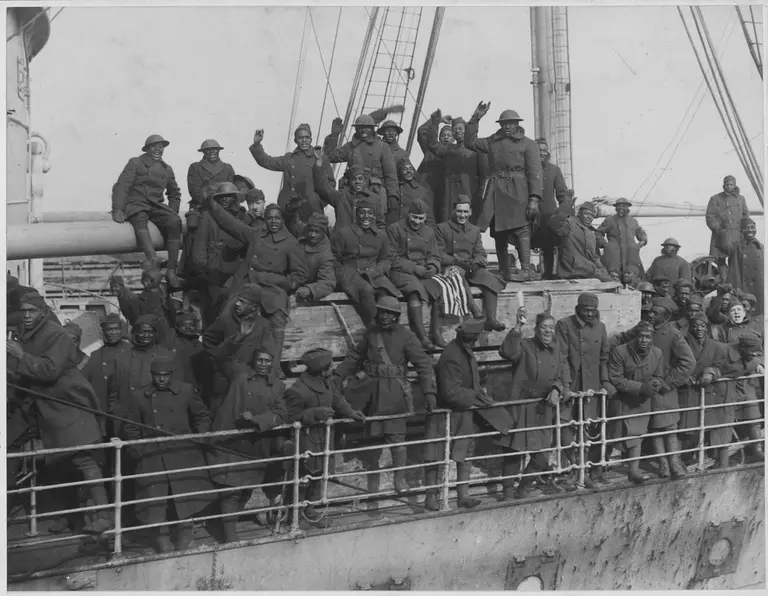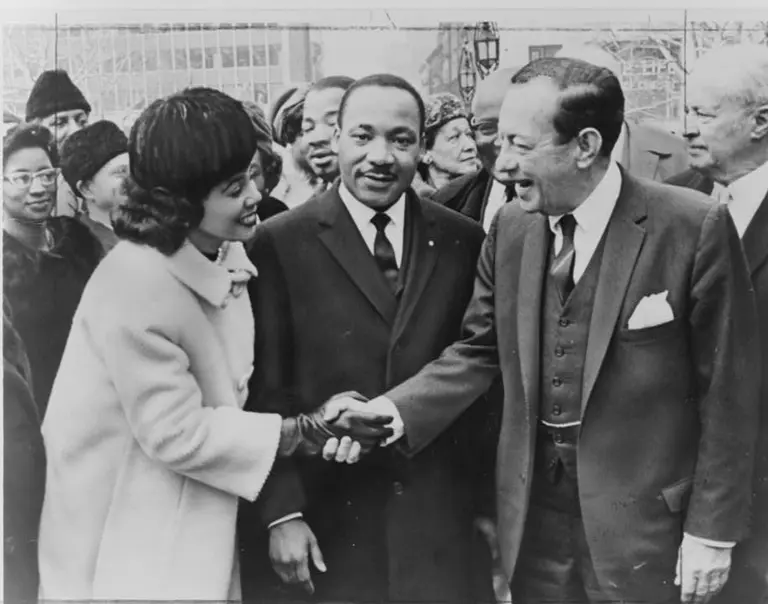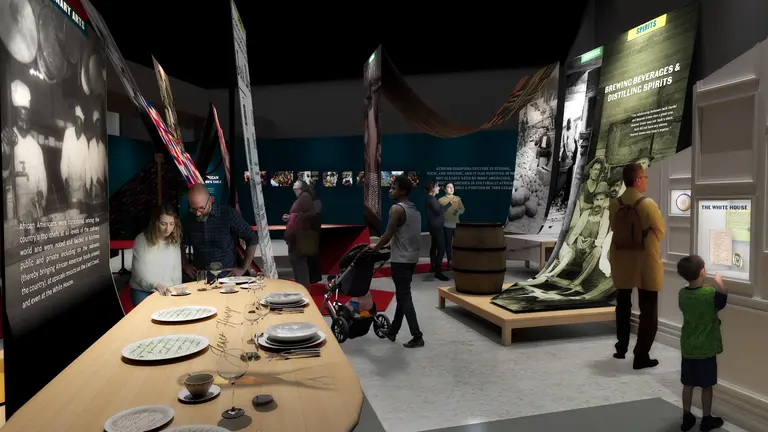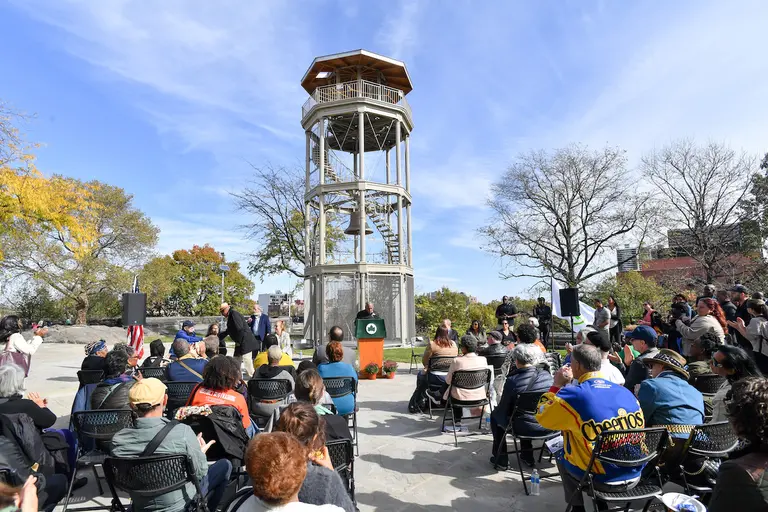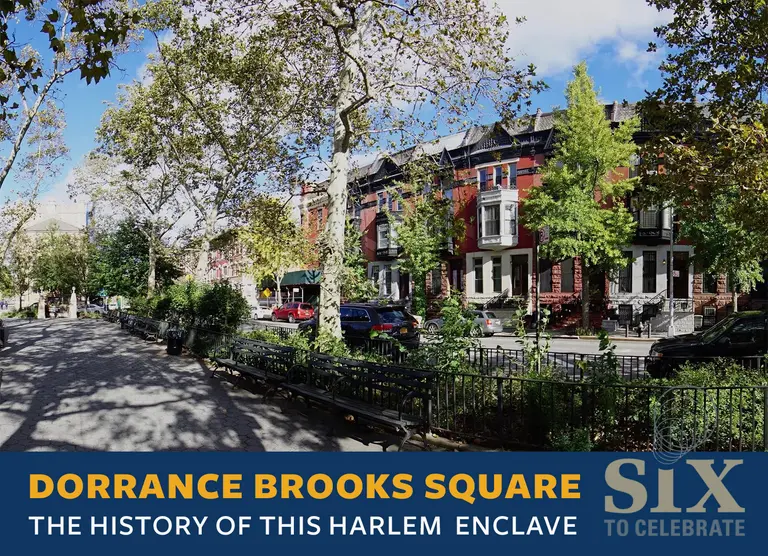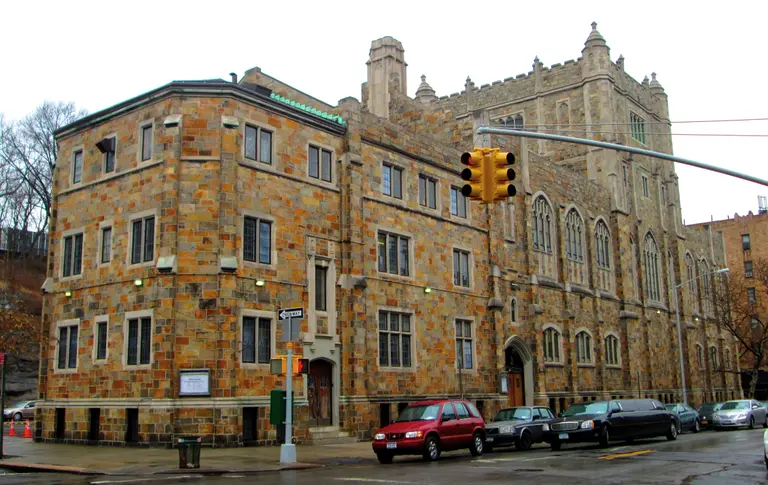Plan to convert African burial ground in Harlem into cultural center and memorial moves forward
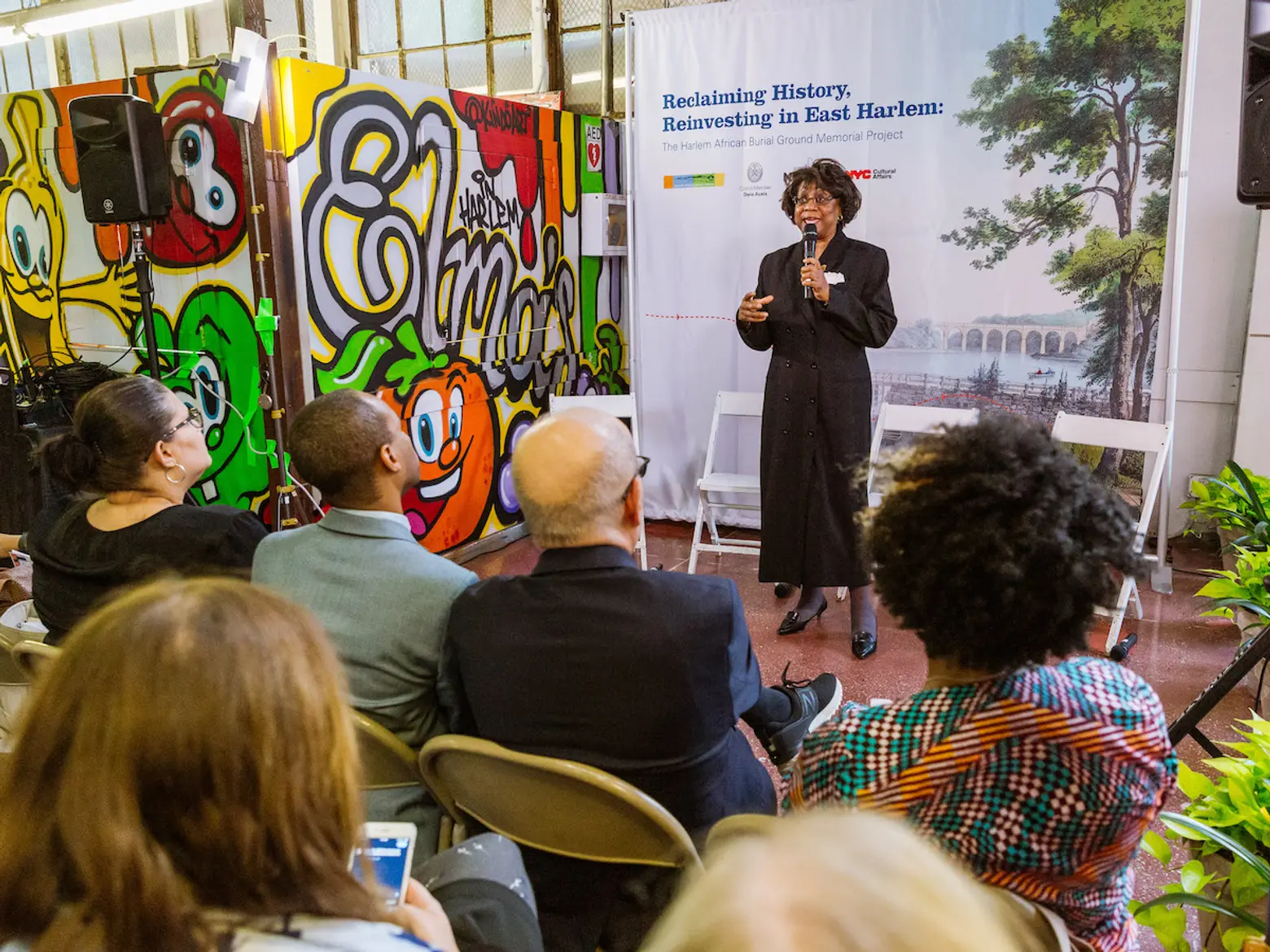
Image courtesy of NYCEDC.
The city’s Economic Development Corporation (EDC) has said it will begin the search for a nonprofit organization to operate the long-in-the-works Harlem African Burial Ground in East Harlem this fall. A decade of research and planning has gone into the task of converting the city block–home to the unused MTA 126th Street bus depot–into a cultural center and outdoor memorial that will honor its past state as a burial ground for enslaved and free African people. City officials say the project will make use of new apartments rising on a newly-rezoned adjoining site as an ongoing source of funding, as first reported by THE CITY.
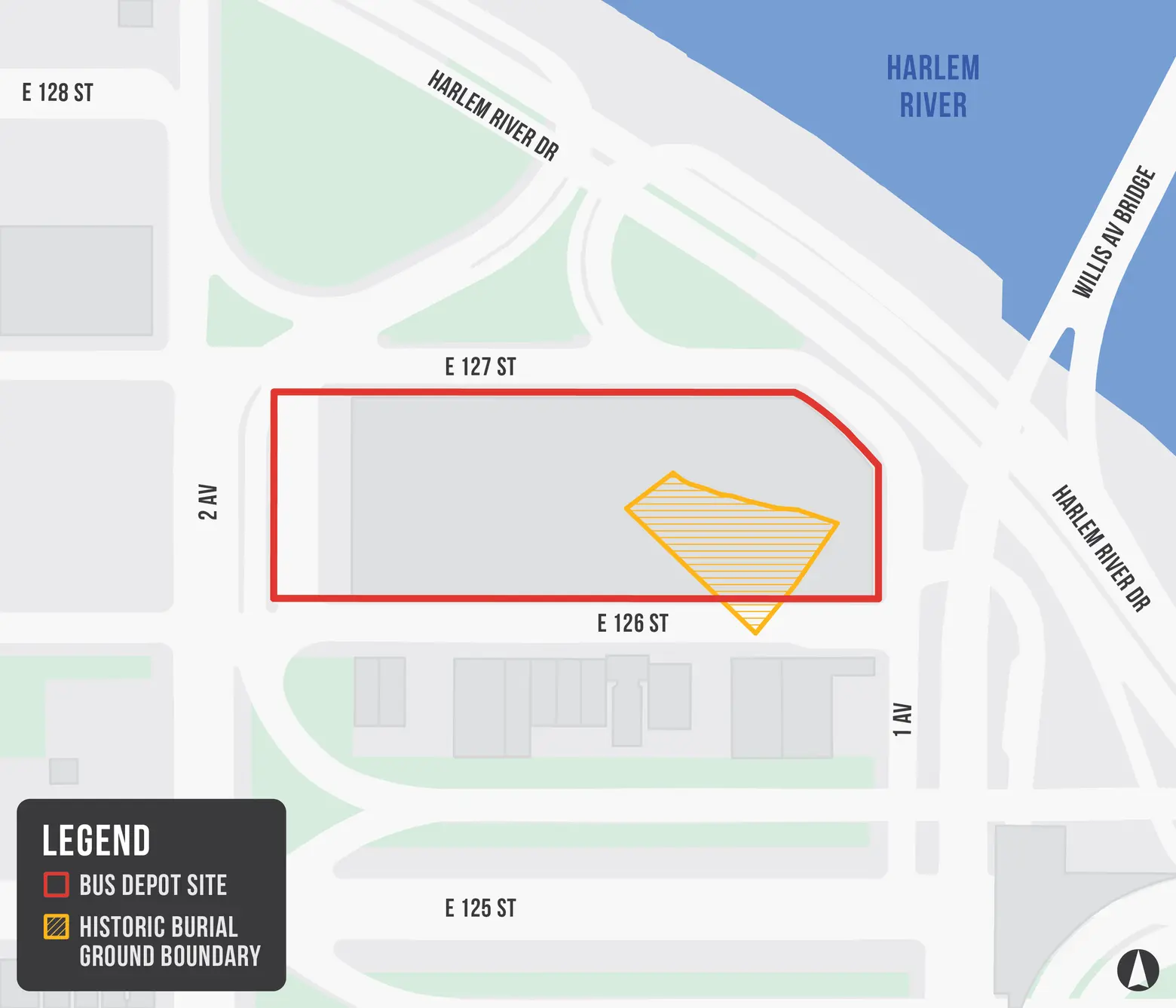
The site was, in 1660s Nieuw Haarlem, the only place in the Dutch-controlled Village where people of African descent were allowed to be buried. The Rev. Patricia Singletary of the Elmendorf Reformed Church on East 121st Street is spearheading the project–she has traced the history of her parish back to the Reformed Low Dutch Church of Harlem, the church to which the colonial-era cemetery belonged. In 2015, archeologists confirmed there were bones buried at the site.
The remains found at the site were consecrated in a ceremony led by Singletary and are currently being held in safe storage at the Landmarks Preservation Commission archives.
Seeking to avoid the financial shortages that often plague cultural centers like this one, the Harlem African Burial Ground Task Force chaired by Singletary and former City Council Speaker Melissa Mark-Viverito came up with an innovative plan to benefit from gains from new apartments that are being developed on a site that adjoins the memorial.
When zoning changes were approved to allow the new development in 2017, then-representative Mark-Viverito reached an agreement with the city stating that at least 80 percent of the area’s apartments will be affordable–and that the future developer will supply $1 million a year to run the memorial and cultural center.
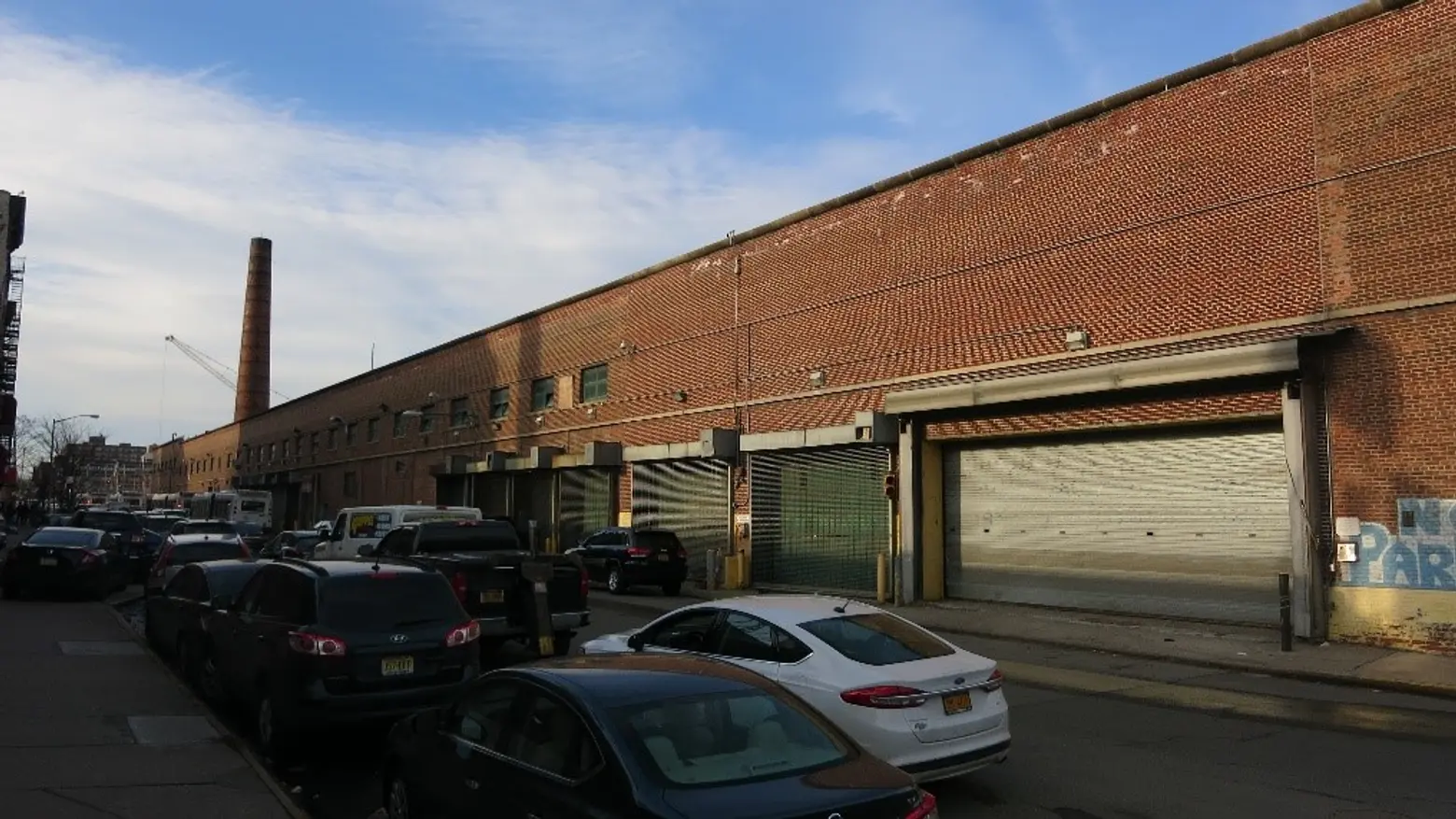
The agreement is non-binding until a developer is found for the apartments, but the promise of steady funding is a good selling point in finding an operator for the burial ground project. The EDC hopes to achieve several goals with the project: providing affordable housing, creating jobs for local residents and promoting tourism while honoring what EDC vice president Adam Meagher calls “erased history.” Meagher said, “When we talk in our mission statement about building strong neighborhoods, I think this is exactly what we mean. This is going to be a community anchor.”
This fall the EDC and the Department of Cultural Affairs will release a “Request for Expressions of Interest” seeking nonprofit groups interested in running the site. The agency will officially ask for development proposals sometime after that. Meagher said finding an operator for the project is the biggest focus: “For the development to be in line with the vision, the vision has to come first.”
There is currently a free exhibition about the project at the La Marqueta public market. The exhibition highlights the past, present, and future of the Harlem African Burial Ground, exploring this historic rediscovery and the community efforts to create the new cultural center and memorial.
[Via THE CITY]
RELATED:
- The story behind Harlem’s trailblazing Harriet Tubman sculpture
- A mecca of African American history and culture, Central Harlem is designated a historic district
- The Harlem Hellfighters: African-American New Yorkers were some of WWI’s most decorated soldiers
Images courtesy of NYCEDC.
